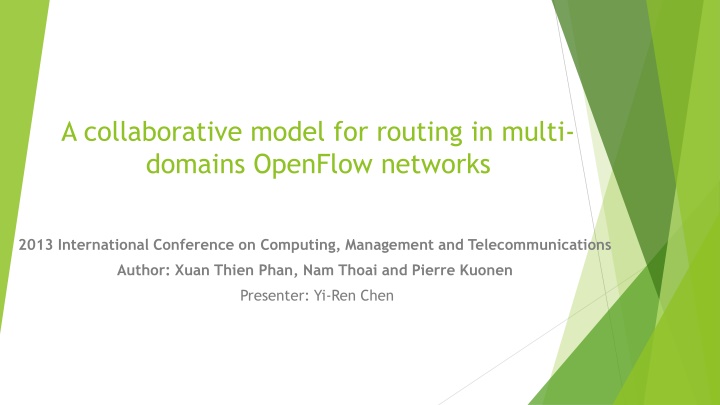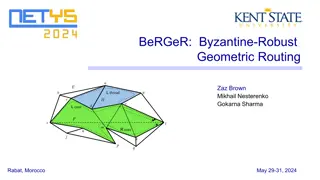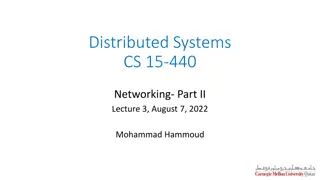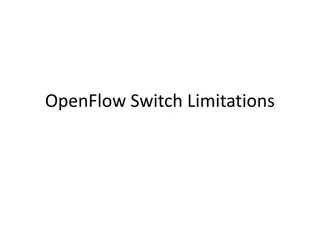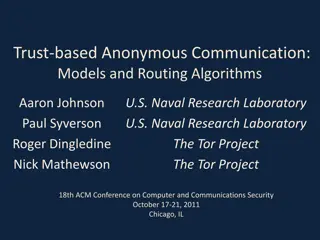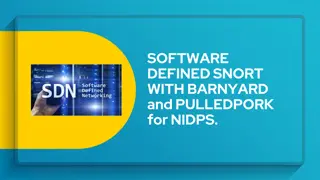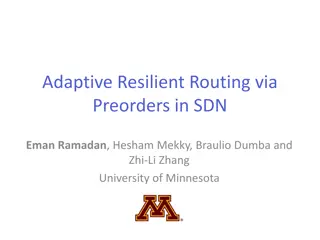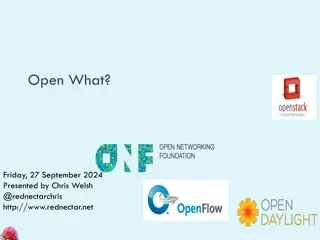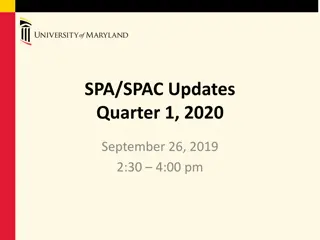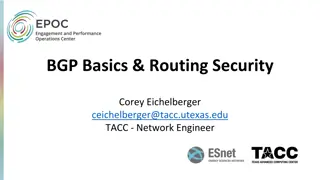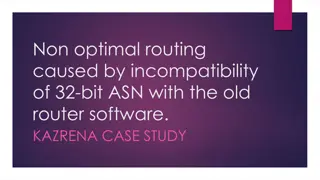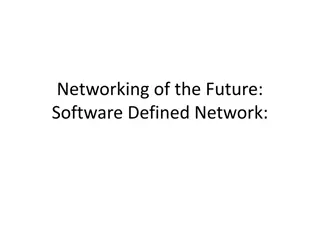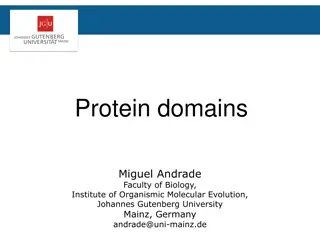Collaborative Model for Routing in Multi-Domains OpenFlow Networks
This study introduces a collaborative model for routing in multi-domain OpenFlow networks, addressing scalability issues and inefficiencies in current controller-centric approaches. The RMOF model enables controllers in different domains to cooperate, share information, and optimize routing paths for cross-domain packets. By maintaining a global topology view and facilitating collaboration among controllers, the model enhances network performance and efficiency.
Download Presentation

Please find below an Image/Link to download the presentation.
The content on the website is provided AS IS for your information and personal use only. It may not be sold, licensed, or shared on other websites without obtaining consent from the author.If you encounter any issues during the download, it is possible that the publisher has removed the file from their server.
You are allowed to download the files provided on this website for personal or commercial use, subject to the condition that they are used lawfully. All files are the property of their respective owners.
The content on the website is provided AS IS for your information and personal use only. It may not be sold, licensed, or shared on other websites without obtaining consent from the author.
E N D
Presentation Transcript
A collaborative model for routing in multi- domains OpenFlow networks 2013 International Conference on Computing, Management and Telecommunications Author: Xuan Thien Phan, Nam Thoai and Pierre Kuonen Presenter: Yi-Ren Chen
Guideline 1. introduction 2. background & related works 3. RMOF model Main component of RMOF model Discovering cross-domain network links Computing routing-costs between cross-domain switches 4. conclusion & future work
introduction The OpenFlow definition v1.2 only consider network that consist of one controller (but OpenFlow org. done this work now), this will be the lack of scalability. For network only one controller, the response time fro request in large network environment is slow due to latency if control bandwidth Current OpenFlow controller & switch apply flooding mechanism to handle cross-domain packets, it is not a good solution!
background & related works Some Approach like FlowVisor and HyperFlow do support multi controllers in network but they actually let every controller work independently or use distributed file system to manage network (unreliable) The new version 1.3 add concept of multiple controllers in network, switch can establish connection with single or multi-controllers But controllers still can not share their management information or collaborate together
RMOF model Main component: RMOF collaborator maintain global topology view by Global routing App Belong two different network domain Cost of shortest path Route-Ins Table contain routing instructions for controller to route cross- domain packets Instruction for controller
RMOF model (cont.) RMOF local routing APP discovers cross domain link in its domain and routing cost that will be sent to RMOF collaborator, and handle Route- Ins table RMOF global routing App is responsible for global topology view Discover cross-domain network link: Use LLDP packets to neighbor switches with switch ID and output port Compute routing-costs between cross-domain switches Compute shortest path route and routing cross-domain packet
conclusion & future work RMOF allows controllers in multiple domain cooperate together to share topology message or routing path But this module need more test in large test-bed to evaluate efficiency, performance and scalability (not show this paper) Their future work: Extend topology view and allow controller share more information like traffic load Reduce the frequency that controllers communicate with collaborator which will be the bottleneck of response time
